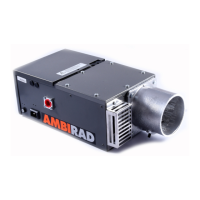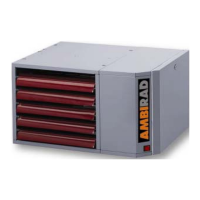Why won't my Ambirad Gas Heater burner start?
- CCassandra WalkerOct 31, 2025
If the Ambirad Gas Heater burner won't start, it could be due to several reasons: * External controls not calling for heat: Adjust the controls. * Blown fuse: Check for a short circuit in the wiring or electrical components. * Fan connector plug disengaged: Securely engage the plug. * Loose electrical connection: Check all connections. * Faulty fan: Replace the fan and recommission the heater, checking gas pressure settings. * Sequence controller relay failing: Check the vacuum switch and replace the sequence controller if needed. * Vacuum switch not returning to normal: Replace the vacuum switch. * Fan overload (Type O fans only): Check the overload setting (3.1 amp for single phase). * Insufficient vacuum: Reset the button on the control panel. * Blocked emitter tube...


